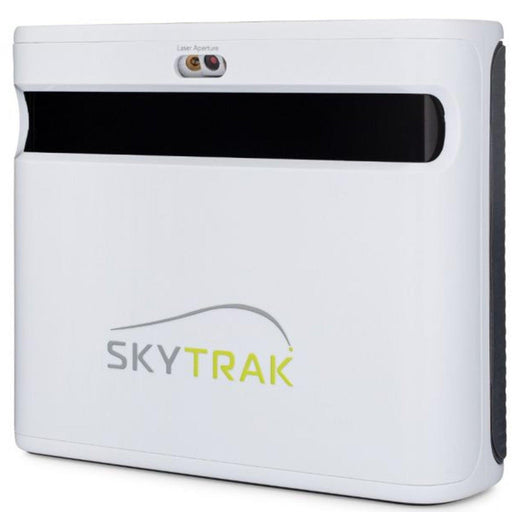
Building Your Own Golf Simulator: What You Need to Get Started
Golf enthusiasts, whether they're seasoned pros or casual players, often dream of playing their favorite sport year-round. But what if you could bring the golf course to your own home, regardless of the weather outside? That's where a golf simulator comes into play. Building your own golf simulator is an exciting and rewarding project that allows you to practice and enjoy golf without leaving your home. In this blog post, we'll guide you through the essential components and steps needed to create your very own golf simulator.
1. Space and Location
Before diving into the technical aspects, you need to determine where you'll set up your golf simulator. Ideally, you'll need a dedicated space with enough room to swing a club comfortably. A garage, basement, or spare room often works best. Ensure the area has proper lighting and ventilation.
2. Launch Monitor
The heart of any golf simulator is the launch monitor. This device captures essential data about your golf shots, such as clubhead speed, ball speed, launch angle, spin rate, and more. These metrics are crucial for accurate simulation and tracking your progress. There are various launch monitors available, ranging from affordable consumer models to high-end professional ones. Popular options include the TrakMan, SkyTrak, Launch Pro, and OptiShot.
3. Projector and Screen
To see your virtual golf course, you'll need a high-quality projector and screen. The projector should provide bright, clear images and be compatible with golf simulation software. A golf impact screen is essential to safely hit real golf balls into. You can purchase a pre-made screen or opt for a DIY solution, building a frame and attaching impact-resistant material.
4. Computer and Software
A powerful computer is necessary to run the golf simulation software smoothly. Make sure your computer meets the recommended system requirements for the software you choose. Popular golf simulation software includes E6 Connect, TGC, and WGT.
5. Turf and Mat
To create a realistic feel when hitting shots, invest in quality golf turf and a hitting mat. Golf mats come in various sizes and price ranges, so choose one that suits your budget and space. A good mat helps absorb shock and reduces wear and tear on your clubs.
6. Optimal Lighting and Sound
A well-lit simulator space is essential for tracking your shots accurately. Ensure that there's even lighting across the hitting area to prevent shadows. Sound is also important for the immersive experience, so consider adding speakers or a sound system.
7. Accessories
Don't forget about the smaller details that enhance your golf simulator setup. This includes a comfortable chair or stool, ball retriever, and club rack for easy access to your clubs.
8. Calibration and Setup
Once you have all the components, it's time to set up and calibrate your golf simulator. Follow the manufacturer's instructions for each device and ensure that they are correctly connected to your computer. Calibrating the launch monitor is crucial for accurate shot data.
9. Practice and Enjoy
With everything in place, you're ready to start practicing and enjoying your home golf simulator. Whether you want to work on your swing, play virtual rounds with friends, or compete in online tournaments, your simulator offers endless possibilities.
DIY Golf Simulator
Building your own golf simulator is an exciting project that can take your golf game to the next level. By investing in the right equipment and dedicating a suitable space, you can enjoy golf year-round from the comfort of your home. Whether you're a serious golfer looking to improve your skills or simply want a fun way to unwind, a golf simulator is a fantastic addition to any golf enthusiast's life. So, get ready to tee off and take your game to new heights with your very own golf simulator!
Featured products
-
SkyTrak+
Original price $2,995.00 - Original price $3,145.00Original price$2,995.00 - $3,145.00$2,995.00 - $3,145.00Current price $2,995.00Introducing the SkyTrak+ Launch Monitor: Unmatched Accuracy and Advanced Features Experience a new level of precision and innovation with the SkyTr...
View full details -
ProTee Majestic Simulator Package
Original price $9,618.00 - Original price $13,848.00Original price$9,618.00 - $13,848.00$9,618.00 - $13,848.00Current price $9,618.00ProTee Majestic Golf Simulator Package: Elevate Your Indoor Golf Experience Transform your home or business into a golfer’s dream with the ProTee M...
View full details -
Eagle Golf Mat
Original price $370.00 - Original price $1,130.00Original price $370.00$370.00$370.00 - $1,130.00Current price $370.00Introducing the Eagle Golf Mat: The Ultimate Golf Experience Are you passionate about golf and demand nothing but the very best in your practice eq...
View full details -
Retractable HomeCourse® Golf ProScreen 180
Original price $2,299.00Original price $2,299.00 - Original price $2,299.00Original price $2,299.00Current price $1,999.00$1,999.00 - $1,999.00Current price $1,999.00HomeCourse® Golf ProScreen 180 HomeCourse® Golf ProScreen 180 is a retractable golf screen and enclosure. HomeCourse® Golf ProScreen 180's ballisti...
View full details -
The Augusta V2 4'x12' 2 Cups
Original price $399.00Original price $399.00 - Original price $399.00Original price $399.00Current price $329.00$329.00 - $329.00Current price $329.00The Augusta is one of Big Moss’ traditional models. It offers unmatched versatility for teaching and year round practice. Make a long-term investme...
View full details





